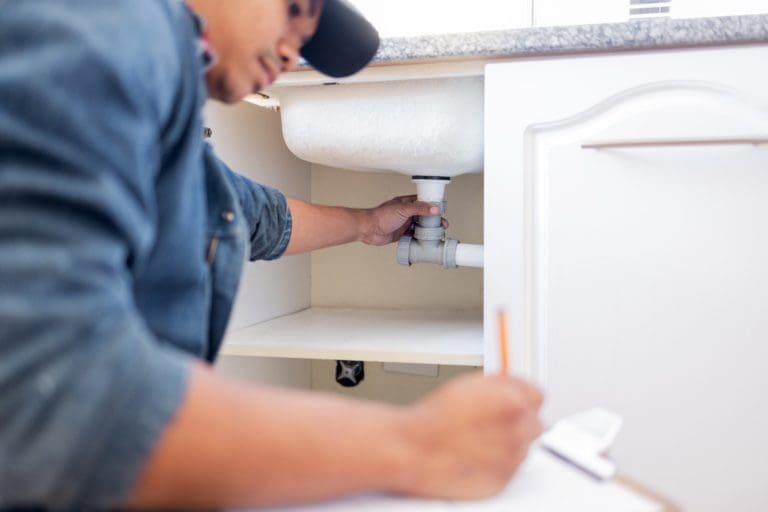Table of Contents
Maintaining a smoothly functioning plumbing system is crucial for the well-being of your home. The last thing you want is a burst pipe or a leaky tap disrupting your daily life. With our comprehensive DIY Plumbing Maintenance Checklist, you can stay on top of your plumbing needs and ensure a stress-free living environment. From simple tasks to more complex troubleshooting, this guide covers it all.
Introduction: Ensuring the Health of Your Plumbing System
When it comes to home maintenance, the plumbing system often takes a back seat until a major issue arises. However, a proactive approach can save you a lot of time, money, and hassle in the long run. This DIY Plumbing Maintenance Checklist will help you understand the essential tasks required to keep your plumbing system in optimal condition. Let’s dive into the checklist and explore the key steps to maintaining a healthy plumbing system.
DIY Plumbing Maintenance Checklist
1. Regularly Check for Leaks and Drips
Leaky pipes and taps not only waste water but can also lead to water damage and mold growth. Perform routine checks for any signs of leaks or drips and address them promptly.
2. Inspect and Clean Drains
Clogged drains can cause slow water drainage and unpleasant odours. Use a natural drain cleaner or a mixture of vinegar and baking soda to keep your drains flowing smoothly.
3. Test Water Pressure
Low water pressure can indicate a hidden issue in your plumbing system. Test the water pressure and consult a professional if you notice any significant drops.
4. Check Toilet Functionality
Ensure that toilets flush properly and that there are no signs of continuous running. A faulty toilet can waste a significant amount of water.
5. Examine Taps and Fixtures
Check taps, showerheads, and other fixtures for leaks and proper functionality. Replace any worn-out washers or parts.
6. Insulate Exposed Pipes
During colder months, insulate exposed pipes to prevent freezing and bursting. Frozen pipes can cause extensive damage and require costly repairs.
7. Flush Water Heater
Flushing your water heater annually removes sediment buildup, improving its efficiency and prolonging its lifespan.
8. Test Sump Pump
If you have a sump pump, test it by pouring water into the sump pit. Ensure that it activates and properly drains the water.
9. Maintain Waste Disposal
Run cold water while operating the waste disposal and avoid putting fibrous or starchy foods down the drain.
10. Check Washing Machine Hoses
Inspect washing machine hoses for signs of wear or bulging. Replace them every few years to prevent potential flooding.
11. Monitor Water Quality
Regularly test your water for impurities, hardness, and pH levels. Consider installing a water filtration system if needed.
12. Address Slow Drains Promptly
If you notice slow drainage, address the issue promptly to prevent a complete blockage.
13. Prevent Grease Buildup
Avoid pouring grease or oil down the drain, as it can solidify and cause blockages.
14. Install Drain Strainers
Place strainers in sinks and showers to catch hair, debris, and other particles that could cause clogs.
15. Maintain Outdoor Plumbing
Don’t forget about outdoor plumbing! Inspect hoses, sprinklers, and outdoor taps for leaks and damage.
16. Test Toilet Flushing Mechanism
Ensure that the toilet’s flushing mechanism works correctly. A malfunctioning flush can lead to frequent clogs.
17. Keep Plumbing Accessible
Avoid blocking access to pipes and plumbing fixtures. This accessibility makes maintenance and repairs easier.
18. Know Your Main Water Valve
Familiarise yourself with the location of the main water valve. In case of emergencies, you can shut off the water supply quickly.
19. Address Running Toilets
If your toilet continues to run after flushing, it’s likely wasting water. Adjust or replace the flush mechanism as needed.
20. Watch for Water Discoloration
Discoloured water can indicate pipe corrosion. If you notice this issue, consider consulting a professional plumber.
21. Be Mindful of What You Flush
Only flush toilet paper and waste. Avoid flushing items that can lead to clogs, such as wipes and feminine hygiene products.
22. Handle Plumbing Repairs Timely
If you identify a plumbing issue beyond your DIY skills, don’t hesitate to call a professional plumber.
23. Keep a Plumbing Maintenance Log
Maintain a record of all plumbing maintenance tasks and repairs. This log can help you track issues and stay proactive.
24. Address Unusual Noises
Gurgling sounds or unusual noises in pipes could indicate an underlying issue. Investigate and address them promptly.
25. Schedule Professional Inspections
While DIY maintenance is essential, periodic professional inspections can catch hidden problems and ensure comprehensive care for your plumbing system.

FAQs
It’s recommended to perform basic maintenance tasks monthly and conduct a more thorough inspection annually.
It’s best to avoid chemical drain cleaners as they can damage pipes and harm the environment. Opt for natural alternatives.
If you’re dealing with a significant plumbing problem, it’s wise to contact a plumber for assistance.
Proper water pressure ensures efficient water flow, effective appliance operation, and a comfortable shower experience.
Insulating exposed pipes and allowing a slow drip during freezing temperatures can help prevent pipes from freezing.
Yes, a dripping tap can lead to water wastage and higher bills. Address it promptly to prevent further damage.
Maintaining a healthy plumbing system is essential for the overall well-being of your home. By following our DIY Plumbing Maintenance Checklist, you can prevent issues, save money, and ensure a smoothly running household. Remember, a little maintenance today can save you from major headaches tomorrow. Stay proactive and keep your plumbing in excellent shape!

